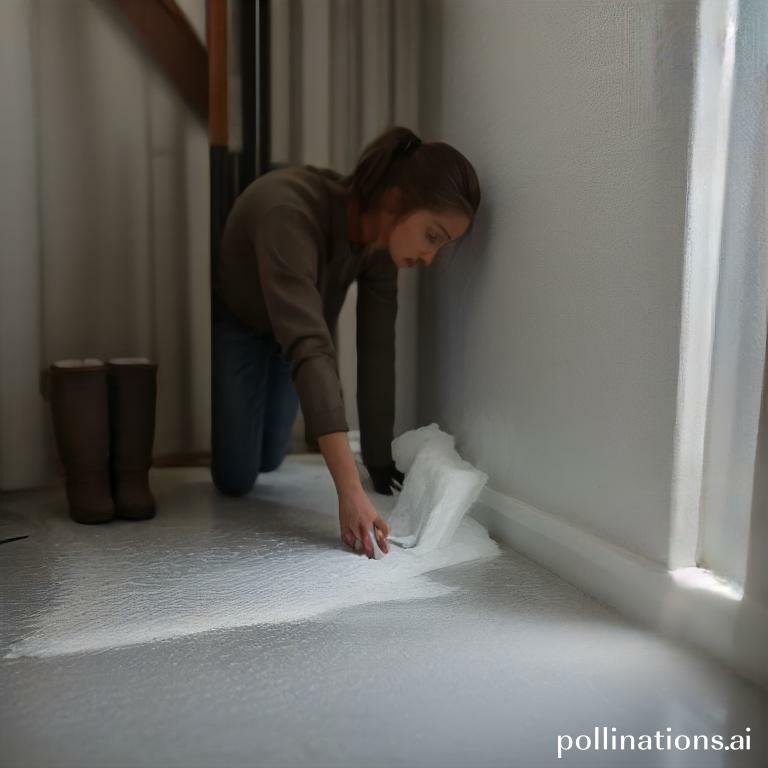
II. Regular maintenance, including flushing the tank and insulating the unit, can prevent sediment buildup and increase energy efficiency.
III. Proper maintenance can also extend the lifespan of the water heater and save money on energy bills.
Proper maintenance of your water heater is crucial for its longevity and efficiency. One important aspect is sediment removal, which involves periodically flushing out any accumulated sediment to prevent clogs and improve heating performance.
Additionally, insulating your water heater can help conserve energy and reduce heat loss, leading to lower utility bills. By ensuring regular sediment removal and proper insulation maintenance, you can maximize the lifespan and effectiveness of your water heater.
Sediment Removal
1. What is sediment buildup?
Sediment buildup refers to the accumulation of solid particles, such as minerals and debris, in your water heater. Over time, these particles can settle at the bottom of the tank, causing various problems.
When water is heated, minerals present in the water can precipitate and form sediment. This sediment can include substances like calcium, magnesium, and rust. Sediment buildup can reduce the efficiency of your water heater, affect its performance, and even lead to costly repairs if left untreated.
2. How to identify sediment buildup in your water heater
There are several signs that can indicate the presence of sediment buildup in your water heater. These include:
- Strange noises coming from the water heater
- Reduced hot water supply
- Fluctuating water temperatures
- Increased energy consumption
- Foul odor or taste in the hot water
If you notice any of these signs, it is likely that sediment has accumulated in your water heater, and it’s time for removal.
3. Methods for removing sediment buildup
There are several effective methods for removing sediment buildup from your water heater:
- Draining and flushing: This is the most common method and involves draining the tank and flushing out the sediment. Start by turning off the power supply and water inlet. Attach a hose to the drain valve, and open it to allow the water to flow out. Once the tank is empty, close the valve and refill the tank.
- Chemical treatment: Certain chemicals can be used to dissolve and flush out sediment. Despite this, it’s important to follow the manufacturer’s instructions and use appropriate safety precautions.
- Professional cleaning: If the sediment buildup is severe or you are unsure about performing the task yourself, it’s best to hire a professional plumber. They have the expertise and tools to clean the tank effectively.
Regular maintenance and sediment removal can help prolong the lifespan of your water heater, maintain its efficiency, and ensure a steady supply of clean hot water.
| Method | Pros | Cons |
|---|---|---|
| Draining and flushing | – Easy to perform – Cost-effective |
– Time-consuming – Requires basic plumbing knowledge |
| Chemical treatment | – Can dissolve stubborn sediment – Convenient |
– Safety precautions required – May affect water quality |
| Professional cleaning | – Expertise and tools – Thorough cleaning |
– Higher cost – Need to hire a professional |
Water Heater Insulation Maintenance
Water heater insulation is an essential aspect of maintaining the efficiency and effectiveness of your water heating system. Proper insulation ensures that the heat produced by the water heater is retained, resulting in lower energy consumption and cost savings. Additionally, insulation helps to prevent heat loss, ensuring that the water remains hot for longer periods. Here, we will ponder the importance of water heater insulation and provide tips on how to maintain it effectively.
1. Why is water heater insulation important?
Water heater insulation is important for several reasons. Initially, it helps to reduce heat loss from the water heater, ensuring that the water remains hot for longer periods. This means that you can enjoy hot water whenever you need it without the need for constant reheating. Furthermore, proper insulation helps to lower energy consumption by reducing the amount of heat that escapes from the water heater. This, in turn, leads to cost savings on your energy bills. As a final point, insulation also helps to protect the water heater from external elements, such as extreme temperatures, which can affect its performance and lifespan.
2. Signs of damaged insulation
Integral to regularly inspect the insulation of your water heater for any signs of damage. Some common signs of damaged insulation include:
- Visible wear and tear on the insulation material
- Uneven or inconsistent water temperature
- An increase in your energy bills
- Water heater constantly running or struggling to maintain hot water
If you notice any of these signs, it is crucial to take immediate action to repair or replace the insulation to maintain the efficiency of your water heater.
3. How to maintain water heater insulation
To maintain the insulation of your water heater, follow these simple steps:
- Regularly check the condition of the insulation material.
- If you notice any signs of damage, such as cracks or wear and tear, replace the insulation promptly.
- Ensure that the insulation covers all exposed areas of the water heater, including the pipes and tank.
- Consider adding additional insulation if needed, especially if your water heater is located in a colder environment.
- Periodically check the temperature settings of your water heater to ensure that it is not set too high, as this can cause excessive heat loss.
Benefits of Regular Maintenance
Regular maintenance of your water heater offers numerous benefits that can augment its performance and extend its lifespan. By maintaining a routine maintenance schedule, you can ensure optimal energy efficiency, prevent leaks and malfunctions, and maximize the longevity of your water heater.
Improved Energy Efficiency
One of the key advantages of regular maintenance is improved energy efficiency. Over time, sediment and mineral deposits can accumulate in the water heater, reducing its efficiency and increasing energy consumption. By flushing out the tank and cleaning the components, you can restore the heater’s efficiency and lower your energy bills.
Increased Lifespan of the Water Heater
Regular maintenance can significantly increase the lifespan of your water heater. By inspecting and addressing any potential issues early on, you can prevent major breakdowns and costly repairs. Additionally, regular maintenance helps to identify and replace worn-out parts, ensuring that your water heater operates smoothly and reliably for years to come.
Reduced Risk of Leaks and Malfunctions
To enjoy these benefits, it is recommended to schedule regular maintenance for your water heater. Consult a professional plumber or follow the manufacturer’s guidelines to determine the appropriate frequency for maintenance, typically once a year. By investing in regular maintenance, you can optimize the performance of your water heater and avoid costly repairs or premature replacements.

DIY vs. Professional Maintenance
1. Pros and cons of DIY maintenance
In the realm of maintaining your article, there are both advantages and disadvantages to taking the do-it-yourself route. On one hand, DIY maintenance allows you to save money and have full control over the process. It can be a fulfilling and educational experience, allowing you to learn new skills and gain a sense of accomplishment. Albeit, it’s important to consider the potential drawbacks. DIY maintenance requires time, effort, and expertise. If you don’t have the necessary knowledge or experience, you may end up making mistakes or causing further damage.
2. Benefits of professional maintenance
In the course of DIY maintenance has its merits, there are undeniable benefits to hiring a professional for the job. Professionals have specialized knowledge and training, ensuring that the maintenance is done correctly and efficiently. They have access to professional-grade tools and equipment, which can result in higher quality results. Additionally, professionals often offer warranties or guarantees on their work, providing peace of mind. By hiring a professional, you can save time and energy, allowing you to focus on other important tasks or simply enjoy your free time.
3. When to hire a professional
Knowing when to hire a professional for maintenance is crucial. At the same time minor maintenance tasks can often be handled on your own, there are certain situations where professional assistance is recommended. If the maintenance task involves complex systems or machinery, it’s best to leave it to the experts who have the necessary expertise and experience. Additionally, if you don’t have the time or resources to dedicate to the maintenance, it’s wise to hire a professional who can efficiently get the job done. Finally, if the maintenance is covered by a warranty or insurance, hiring a professional may be a requirement to ensure compliance.
| DIY Maintenance | Professional Maintenance |
|---|---|
| Can save money | Specialized knowledge and training |
| Full control over the process | Access to professional-grade tools and equipment |
| Fulfilling and educational | Warranties or guarantees on work |
| Time-consuming and requires expertise | Saves time and energy |

Safety Precautions
Ensuring safety is paramount in regard to any maintenance work. By complying with proper safety precautions, you can minimize the risk of accidents and injuries. In this section, we will discuss the importance of safety precautions, common safety hazards during maintenance, and provide some safety tips for DIY maintenance.
Importance of Safety Precautions
When engaging in maintenance tasks, it is crucial to prioritize safety. Safety precautions not only protect you from potential harm but also safeguard your property and those around you. By taking the necessary precautions, you can prevent accidents, damage, and costly repairs.
Common Safety Hazards during Maintenance
During maintenance work, there are several common safety hazards that you should be aware of. These hazards include:
- Falls: Working at heights without proper fall protection equipment can lead to severe injuries or even fatalities. Always use appropriate safety harnesses, guardrails, or scaffolding when working at elevated locations.
- Electrical Hazards: Working with electricity poses significant risks. Ensure that you turn off the power supply before starting any electrical maintenance and use insulated tools to minimize the chances of electrical shocks.
- Chemical Exposure: Some maintenance tasks involve handling hazardous chemicals. It is essential to wear appropriate personal protective equipment (PPE) such as gloves, goggles, and masks to protect yourself from chemical splashes or inhalation.
- Fire Hazards: Certain maintenance activities can create fire hazards, especially when working with flammable materials or near open flames. Always have fire extinguishers readily available and follow proper fire safety protocols.
Safety Tips for DIY Maintenance
If you are planning to handle maintenance tasks yourself, here are some safety tips to keep in mind:
- Educate Yourself: Before starting any maintenance work, make sure you have a good embracing of the task at hand. Research proper techniques, safety guidelines, and use reliable resources to gain the necessary knowledge.
- Use Protective Gear: Always wear appropriate protective gear to minimize the risk of injuries. This may include safety goggles, gloves, helmets, or steel-toed boots, depending on the nature of the maintenance work.
- Follow Instructions: Carefully read and follow the manufacturer’s instructions and safety guidelines for any equipment or tools you are using. Improper usage can lead to accidents or damage.
- Work in Well-Ventilated Areas: When working with chemicals or substances that produce fumes, ensure proper ventilation to prevent respiratory issues. Open windows or use fans to maintain a fresh airflow.
Bottom Line
Regular maintenance of sediment removal and water heater insulation is crucial for ensuring the longevity and efficiency of your water heater. Sediment buildup can lead to decreased performance and even damage to the tank, during inadequate insulation can result in heat loss and higher energy bills. By flushing your tank regularly and checking the insulation, you can prevent these issues and save money in the long run. Additionally, consider investing in a high-efficiency water heater or a tankless system to further reduce energy costs and improve performance. Don’t neglect your water heater – take the necessary steps to keep it running smoothly and efficiently.
Read More:
1. Sediment Impact On Water Heater Burner Performance
2. Sediment Removal And Water Heater Temperature Pressure Relief Valve










